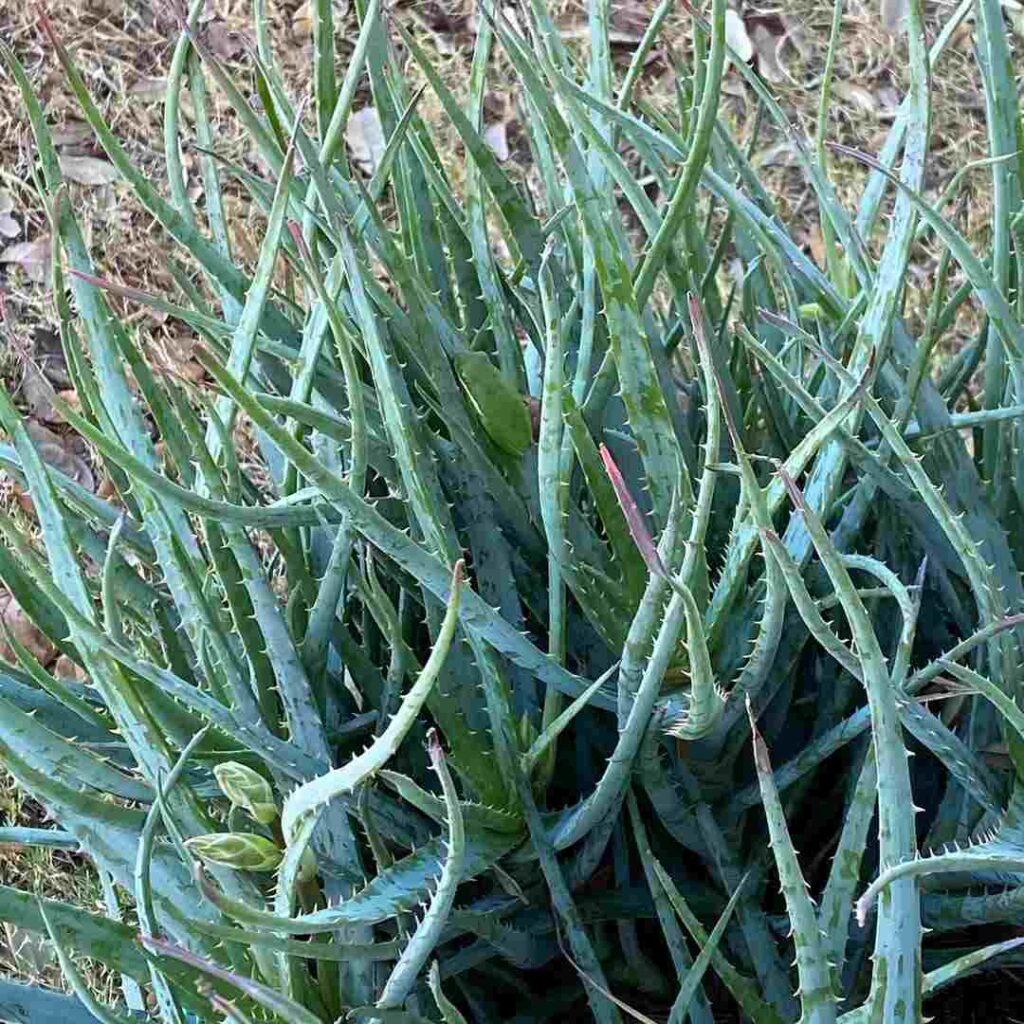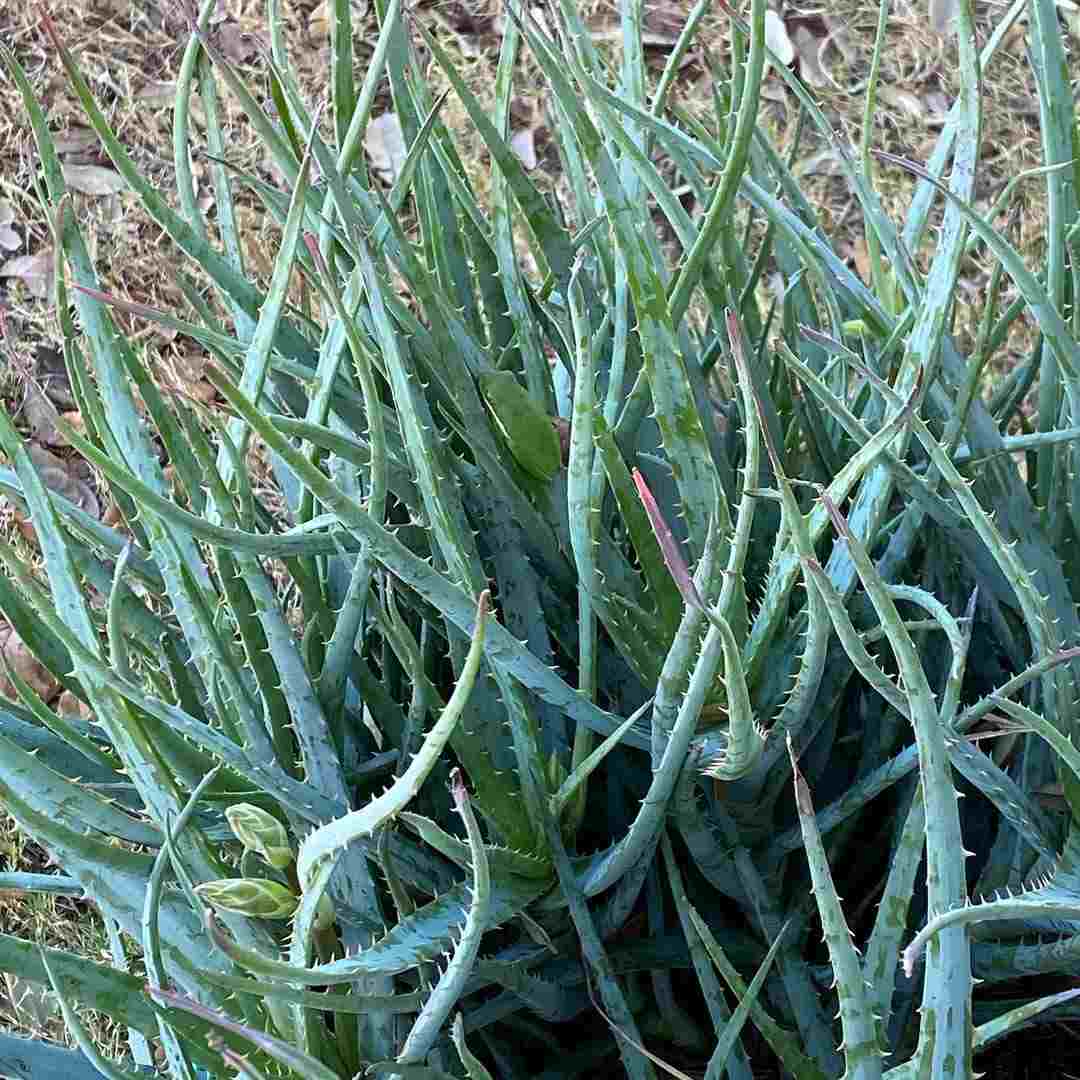Aloe vera is a popular succulent known for its medicinal properties and easy care. Many gardeners wonder, how big do aloe veras grow? Understanding the growth potential of aloe vera helps in planning the right space and care for these versatile plants. Typically, aloe vera can reach a mature size of 24 to 39 inches in height and spread about 24 to 36 inches wide under optimal conditions.
Growth depends on factors such as pot size, sunlight, water, and soil quality. Indoors, aloe vera tends to stay smaller, while outdoor plants can grow larger given enough room and a favorable climate. Knowing these growth patterns can help you maintain healthy aloe vera and enjoy its benefits fully.

Understanding Their Growth Patterns
Natural Growth Cycle
Aloe vera plants grow in a rosette shape, with thick, fleshy leaves radiating outward from the center. Their growth rate depends on environmental conditions such as light, temperature, and watering habits. In ideal outdoor settings, aloe vera can grow steadily throughout the warmer months, slowing down during colder seasons. Indoors, growth tends to be slower due to limited light and space.
Size Influencers
Several key factors influence how big aloe vera grow:
- Light: Aloe vera thrives in bright, indirect sunlight. Insufficient light causes slower growth and smaller leaves.
- Pot Size: Limited root space in smaller pots restricts overall plant size. Repotting into larger containers encourages more growth.
- Water and Soil: Well-draining soil and careful watering prevent root rot and promote healthy development.
Growth Stages Overview
- Juvenile Stage: The plant is small, with fewer leaves and slower growth.
- Mature Stage: Aloe vera reaches full size, typically 24–39 inches tall, with wide, thick leaves.
- Propagation Stage: Offshoots or “pups” appear, helping the plant spread and increase in size over time.
Understanding these patterns allows gardeners to optimize conditions for the best aloe vera growth.
Growth Variations in Aloe Vera
Different Aloe Vera Species
While Aloe vera (Aloe barbadensis miller) is the most common species, there are several varieties that show growth variations. Some cultivars remain more compact, while others grow larger and more robust. For instance, Aloe vera ‘Chinensis’ tends to have longer, thinner leaves compared to the standard variety, which can affect the overall plant size.
Environmental Impact on Growth
Growth variations are heavily influenced by the environment. In warmer climates with ample sunlight, aloe plants can reach their maximum size quickly, often exceeding 3 feet in height and width. Conversely, in cooler or indoor environments with less light, growth slows significantly, and plants may only reach about 12 to 18 inches tall. Soil quality and watering habits also create differences, with nutrient-rich, well-drained soil promoting larger, healthier plants.
Container vs. Ground Growth
Aloe vera grown in containers generally stays smaller due to root confinement. In contrast, plants grown directly in the ground have more room to spread roots, resulting in bigger and fuller growth. Here’s a quick comparison:
| Growth Environment | Typical Size Range | Growth Rate |
|---|---|---|
| Indoor Container | 12–18 inches tall | Slow to moderate |
| Outdoor Container | 18–24 inches tall | Moderate |
| Outdoor Ground | 24–39 inches tall | Fast to moderate |
Recognizing these variations helps gardeners adjust care routines and expectations for their aloe vera plants.
What Affects Aloe Vera Size?
Light Exposure
One of the most critical factors influencing aloe vera size is light. Aloe vera thrives in bright, indirect sunlight, requiring at least 6 to 8 hours daily to reach its full potential. Insufficient light results in slow growth, pale leaves, and smaller plants. Conversely, direct harsh sunlight can cause leaf scorch, stunting growth or causing damage.
Watering and Soil Conditions
Aloe vera prefers well-draining, sandy soil that prevents water retention around roots. Overwatering is a common mistake that causes root rot and limits growth. Proper watering involves letting the soil dry out completely between waterings. This stress management encourages stronger root systems and healthier, larger leaves.
Temperature and Humidity
Aloe vera grows best in temperatures between 55°F and 80°F (13°C to 27°C). Temperatures below 50°F (10°C) slow growth significantly, and frost can kill the plant. Humidity is less impactful but very high humidity can increase disease risk. Maintaining moderate, stable environmental conditions helps aloe vera achieve its optimal size.
Container Size and Root Space
When grown in pots, aloe vera size is limited by root space. A small pot restricts root expansion, leading to smaller plants. Repotting every 2-3 years into a slightly larger container promotes growth by providing room for roots to spread and absorb nutrients effectively.
By managing these factors well, gardeners can help their aloe vera plants grow larger, healthier, and more vibrant.
Compact Aloe Vera Varieties for Small Spaces
Why Choose Compact Varieties?
Not all gardeners have ample space for large aloe vera plants. Compact varieties offer the perfect solution for balconies, small patios, or indoor shelves. These varieties grow slower and stay smaller, making them easier to maintain without sacrificing the plant’s natural beauty and benefits.
Popular Compact Aloe Varieties
- Aloe Vera ‘Little Sister’: This variety grows to about 8–12 inches tall, featuring thick, fleshy leaves with a more delicate appearance. It’s ideal for tabletops or small containers.
- Aloe ‘Black Gem’: Known for its dark, almost black leaves, this compact aloe rarely exceeds 12 inches in height, making it perfect for decorative indoor use.
- Aloe juvenna (Tiger Tooth Aloe): A small species with spiky, toothed leaves growing up to 12–18 inches tall. It’s a favorite for succulent collections and small gardens.
Care Tips for Compact Aloes
- Use well-draining soil specifically designed for succulents.
- Provide bright, indirect sunlight for 6+ hours daily.
- Water sparingly, allowing soil to dry out completely between waterings.
- Repot every 2-3 years into slightly larger pots to encourage healthy root development.
These compact aloe varieties provide all the benefits of standard aloe with a size suited to limited spaces, making them perfect for urban gardeners and indoor plant enthusiasts.
Medium-Sized Aloe Vera for Balanced Growth
Ideal Choice for Versatile Spaces
Medium-sized aloe vera plants strike a perfect balance between compactness and lush growth. Typically reaching 18 to 24 inches in height and width, these varieties suit both indoor and outdoor environments where space is moderate but gardeners still want a visually striking and productive plant.
Notable Medium Varieties
- Aloe Vera (Standard Variety): The classic aloe vera often falls into this category, growing 18–24 inches tall under good care. Its thick, fleshy leaves contain the well-known healing gel.
- Aloe aristata (Lace Aloe): Reaching around 12–18 inches, it has distinct white markings and spiny leaf edges, making it attractive and manageable.
- Aloe maculata (Soap Aloe): This species can grow up to 24 inches with spotted leaves and bright red flowers, offering both size and ornamental appeal.
Care and Maintenance Tips
- Light: Medium-sized aloes prefer bright, indirect sunlight but can tolerate some direct sun exposure.
- Watering: Moderate watering encourages steady growth; avoid overwatering to prevent root rot.
- Pot and Soil: Use pots that allow root expansion with well-draining cactus or succulent soil mix to maintain healthy growth.
Medium-sized aloe vera plants provide a great option for gardeners wanting an aesthetically pleasing, functional plant without the maintenance of larger varieties.
Large Aloe Vera Varieties for Bold Statements
Making a Dramatic Impact
Large aloe vera varieties are perfect for gardeners who want their plants to serve as eye-catching focal points in gardens or spacious interiors. These aloes can reach heights of 3 feet or more, with wide, thick leaves that showcase the classic succulent look while providing abundant healing gel.
Examples of Large Aloe Varieties
- Aloe barbadensis miller (Giant Aloe Vera): The standard species can grow up to 3 feet tall and wide when planted outdoors in ideal conditions, making it a true garden centerpiece.
- Aloe ferox (Cape Aloe): Known for its tall, upright growth reaching up to 5 feet, with striking red-orange flowers and robust leaves, this variety is popular in landscapes and commercial aloe farming.
- Aloe marlothii (Mountain Aloe): A large species growing up to 6 feet tall, with broad, spiny leaves and impressive flower stalks, often used in xeriscaping.
Care Considerations for Large Aloes
- Require ample sunlight, preferably full sun for several hours daily.
- Need spacious planting areas or large containers for root expansion.
- Require well-draining soil and moderate watering to prevent root issues.
- Benefit from occasional fertilization during growing seasons to support vigorous growth.
Choosing large aloe vera varieties adds bold texture and interest to any planting space, turning your garden into a striking, low-maintenance oasis.
Indoor vs. Outdoor Aloe Vera Growth
Growth Differences Based on Environment
Aloe vera plants display noticeable growth variations depending on whether they are grown indoors or outdoors. Outdoor aloe vera typically grows larger and faster due to more abundant natural sunlight, space, and airflow. In contrast, indoor aloe plants usually remain smaller and grow more slowly because of limited light intensity and confined pot space.
Indoor Aloe Vera Growth Factors
- Light: Indoor aloe thrives in bright, indirect light near south- or west-facing windows but often receives less intensity than outdoor plants.
- Space: Pots limit root expansion, keeping plants compact, usually around 12 to 18 inches tall indoors.
- Temperature: Stable indoor temperatures (65–75°F) are ideal, avoiding cold drafts or overheating.
Outdoor Aloe Vera Growth Factors
- Sunlight: Outdoor aloe gets full or partial sun, essential for faster, fuller growth, often reaching 2 to 3 feet tall.
- Soil and Drainage: Natural soil with good drainage encourages healthier root systems and larger plant size.
- Climate: Aloe thrives in USDA zones 9–11; cold or frost-prone areas stunt growth or cause plant death unless protected.
Choosing the right environment depends on your climate and available space, but with proper care, aloe vera can thrive both indoors and outdoors.
How Care Mistakes Impact Aloe Vera Size
Overwatering and Root Rot
One of the most common mistakes gardeners make is overwatering aloe vera. Succulents store water in their leaves and require infrequent watering. Excess moisture leads to root rot, which damages the root system and severely stunts plant growth. Signs of overwatering include yellowing, mushy leaves, and a foul odor from the soil. This condition limits the plant’s ability to absorb nutrients, causing it to remain small or even die.
Insufficient Light
Aloe vera requires bright, indirect sunlight to grow to its full size. Growing it in low-light conditions results in elongated, weak leaves and stunted growth. Plants may become leggy as they stretch toward light sources, which weakens their overall structure and reduces their size potential.
Poor Soil and Drainage
Using heavy, compacted soil without proper drainage can suffocate roots and cause water retention, affecting size negatively. Aloe vera prefers well-draining, sandy or cactus-specific soil. Without this, roots may rot, and growth slows dramatically.
By avoiding these care errors—watering too much, providing too little light, and using inappropriate soil—gardeners can ensure their aloe vera grows healthy and reaches its optimal size.
Managing Aloe Vera Size for Better Aesthetics
Pruning for Shape and Control
Regular pruning is essential to maintain the size and appearance of your aloe vera plant. Trimming off older, outer leaves not only controls bulk but also promotes new, compact growth. Use a sterilized, sharp knife or shears to cut the leaves close to the base. Avoid removing inner, younger leaves, as these are vital for ongoing growth. Prune during spring or early summer for best results.
Choosing the Right Pot Size
Container size significantly influences aloe growth.
- Smaller pots restrict root expansion, keeping plants compact.
- Larger pots allow unrestricted growth and can lead to oversized specimens.
Choose a pot that is about 1–2 inches larger than the root ball. Ensure it has proper drainage to avoid waterlogging, which can encourage overgrowth and root rot.
Strategic Placement and Light
Aloe vera thrives in bright, indirect sunlight. However, too much direct sunlight can lead to legginess, where the plant stretches and becomes unsightly.
Tips to enhance aesthetics:
- Place aloe near a south or east-facing window.
- Rotate the plant every few weeks for balanced light exposure.
- Group with smaller succulents to create an attractive display without overwhelming space.
Maintaining the right size not only keeps aloe healthy but also ensures it enhances indoor or outdoor decor.
Conclusion
Aloe vera can grow impressively large under the right conditions, but with mindful care, its size can be managed to suit any space. Understanding how big aloe vera grow helps gardeners make informed decisions about pruning, container size, and placement. With these strategies, you can enjoy a beautiful, healthy aloe plant that complements your home or garden without overwhelming it.

I’m Shofi, a passionate gardener and blogger. I have 10+ years of experience in gardening and hold certifications in horticulture and garden design. I share my knowledge and skills through my garden blog to inspire and educate others on the joys of gardening. I try to provide valuable information and create a community for gardeners of all levels to connect and learn. My ultimate goal is to inspire others to start their own gardens and connect with nature.

